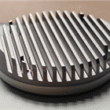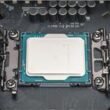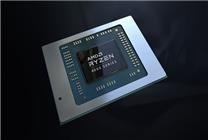### Summary
– SK Hynix solidifies its position as the leading HBM memory manufacturer with the launch of its first mass-produced HBM4 memory.
– Samsung aims to regain market share by advancing its HBM4 certification and expanding production capabilities but faces a time gap of at least three months.
– Investment in cutting-edge 10nm technology signifies Samsung’s commitment to competing for NVIDIA’s next-generation GPUs.
—
In a significant development in the memory semiconductor industry, SK Hynix has emerged as the dominant player in High Bandwidth Memory (HBM) production. As of September 12, the company announced the successful mass production of its first HBM4 memory, further solidifying its competitive advantage in the market.
In response, Samsung is making strategic moves to enhance its position as the second-largest supplier of HBM4 technology. Despite lagging behind SK Hynix by a minimum of three months, Samsung is focused on matching its competitor’s offerings. The company plans to complete its HBM4 certification by the first quarter of next year, aiming to be ready to meet the anticipated demand for NVIDIA’s next-generation GPU Rubin series. This Series is expected to feature a remarkable 288GB of HBM4 memory, creating a pressing timeline for Samsung to facilitate customer testing and production ramp-up.
Currently, Samsung has transitioned its HBM4 technology into the mass production phase internally and is preparing to produce test samples. The company recognizes the importance of timely product delivery and has initiated the construction of a new factory in Pyeongtaek, South Korea, designated as P5. Initially stalled due to fluctuations in semiconductor demand, construction is now back on track, with infrastructure completion expected within the month. Samsung is investing heavily in this facility to bolster its HBM4 output.
Notably, Samsung is employing the second generation of its advanced 10nm-level DRAM technology, classified as 1c. In contrast, SK Hynix’s recently mass-produced HBM4 relies on the fifth generation of 10nm-level process technology, termed 1b. By leveraging this cutting-edge technology, Samsung aims to position itself favorably for an impending battle for NVIDIA’s lucrative contracts.
The competitive landscape in the HBM sector is increasingly dynamic as technological advancements and market demands evolve. With NVIDIA planning large-scale deployments of their Rubin series in the latter half of this year, the timing is crucial. This competition not only underscores the rapid pace of innovation in the memory sector but also highlights the ongoing rivalry between SK Hynix and Samsung.
As the industry watches closely, Samsung is making a concerted effort to reclaim lost ground. The investments in infrastructure and advanced technologies signal its commitment to outperforming competitors and meeting the needs of leading GPU developers.
Experts indicate that the successful implementation of HBM4 could redefine performance benchmarks in computing, making advancements in memory technology all the more significant. As the rivalry intensifies, both manufacturers will be keenly assessed not just on their technological capabilities but also on their ability to respond effectively to market demands.
In summary, the developments in HBM memory production illustrate a broader trend of competition driven by rapid technological advancement. As both SK Hynix and Samsung strive to lead in this pivotal sector, the choices they make now could have long-lasting impacts on their market positions and influence future innovations.
—







